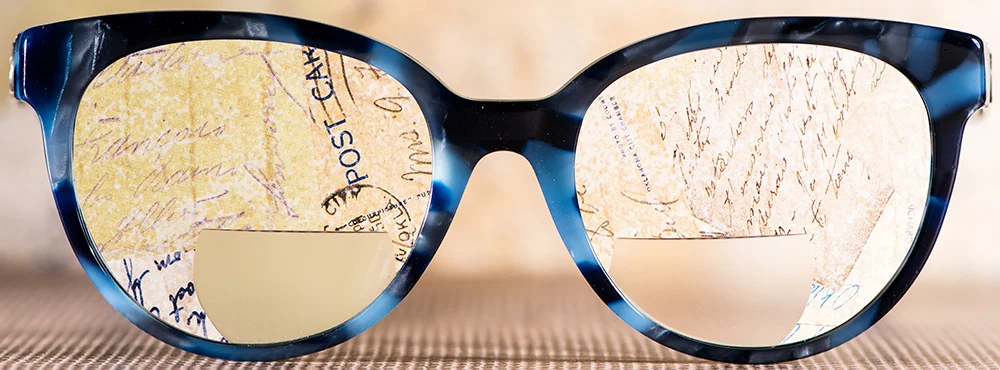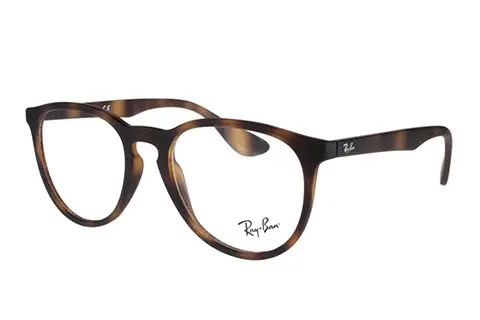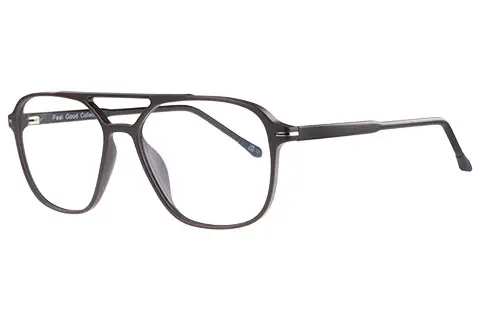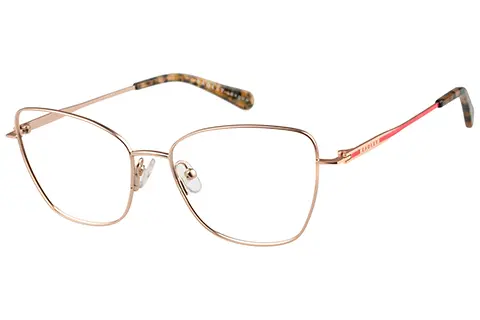Bifocal lenses are a type of multifocal lens that contains two lens powers. There are many different kinds of bifocal glasses, and they can be worn for various reasons. Read below for more information on glasses with bifocal lenses, including who should wear them, how they compare to varifocals, and the best frame options for bifocal lenses.
What are bifocal glasses?
Bifocal lens glasses are a single pair of frames that contain two separate optical powers. One power is for near-distance and is commonly used for reading, whilst the other is for long-distance.
Bifocal lenses all function in the same way, by providing two different powers in one pair of frames. However, there are still different types of designs:
Different types of bifocals
- D Seg bifocal lenses: These feature a horizontal D shape in the bottom section of the lens. They are the most common type of bifocal lenses as they are easier to adapt to.
- Round: These feature a round shape at the bottom part of the lens. They are less popular than D Seg lenses.
- Executive or split: These lenses feature a near 50/50 split between close and distance viewing – the entire bottom half is dedicated to reading, and the top portion is for distance.
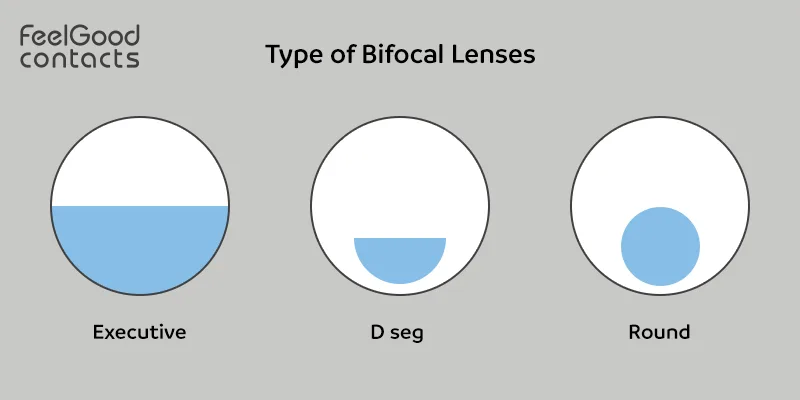
What is the purpose of bifocal glasses?
Bifocals eliminate the need to carry around and maintain two pairs of single-vision glasses. For example, if you’re out walking, you’ll most likely need your long-distance glasses, but if you decide to take a reading break, you’ll need to switch to your reading glasses.

Bifocal lens glasses are also popular for driving. The distance part of the lens allows the wearer to see the road clearly, while the close-up part allows the wearer to see the dashboard clearly.
Generally, the purpose of bifocal lens glasses is to provide two lens powers in one pair of frames.
Who should wear bifocal lenses?
Bifocal lens glasses are ideal for those who suffer from presbyopia. This is when the eye loses its ability to focus on nearby objects. It is a common form of eyesight deterioration, and most people will experience this after the age of 40.
The most common symptom of presbyopia is difficulty reading close-up, smaller texts. If you find yourself squinting or holding your reading material further away to make the letters appear clear, this could be a sign you need to wear bifocal lens glasses.
More signs include:
- Headaches after reading or looking at anything close-up for a long period of time
- Sudden blurred or hazy vision
- Double vision
If you are experiencing any of these symptoms, it’s important to book an eye test with your optician. They will assess whether you are presbyopic and prescribe the correct prescription accordingly.
Are bifocals better than varifocals?
Whether bifocals are better than varifocals (also known as progressive lenses) will depend on the wearer and their individual needs. The main difference between bifocals and varifocals is that varifocals allow three different powers instead of two.
Bifocals: These glasses contain two prescriptions (distance and close-up) separated by a visible line. Wearers have to look up and down to switch between the powers. Usually, the long-distance prescription is at the top, and the near vision is at the bottom.
Varifocals: These lenses do not have a visible line to separate the powers. There are three powers:
- Distance in the upper part of the lens
- Intermediate in the middle (ideal for viewing anything between 1 and 2 meters)
- Near distance in the lower part of the lens
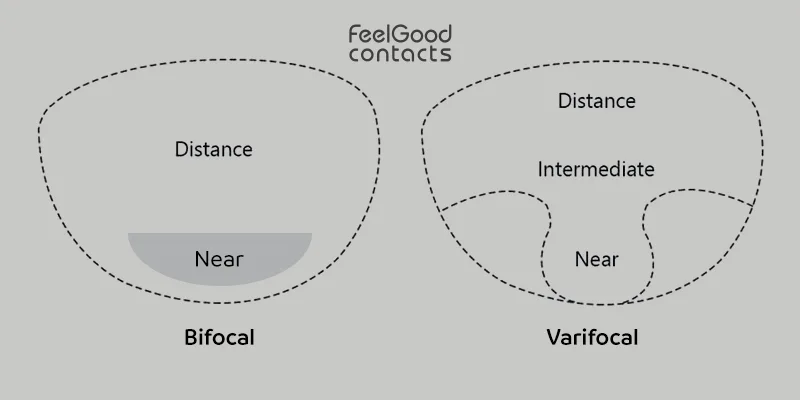
Varifocals can be a more ideal option due to the gradual transition, in comparison to the sudden jump that you experience when wearing bifocals. This depends on the wearer and will be taken into consideration by your optician.
Shop the best frames for bifocals
If your optician has recommended bifocal glasses for you, then you’ll want to choose the best frames to ensure your bifocals are as comfortable as possible. You should consider weight and size to ensure your bifocals aren’t too heavy or bulky.
Additionally, some frame shapes may be more suitable than others, i.e., a narrow rectangle frame shape may not provide sufficient lens space for multiple prescriptions.
Here are some of our best frames for bifocal glasses:

 Offers
Offers Account
Account
 Favorite
Favorite
 Basket
Basket

 OFFERS
OFFERS











